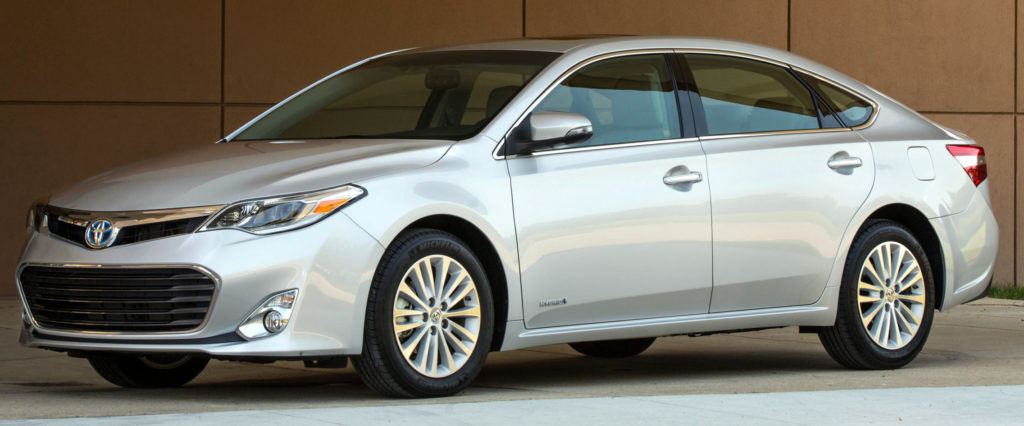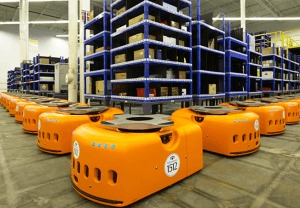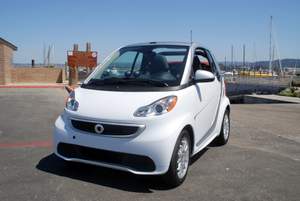The Future of Driving Is Arriving
Those gifts that you ordered from Amazon are shuttled through a massive warehouse by a self-driving vehicle. In 2019, 100 Volvos that can self-drive with the touch of a button will be in use in Gothenburg, Sweden. A year later, more than 1,000 self-driving cars from several automakers will be on the roads of Ann Arbor, Michigan.
Within 10 years, a major city will have thousands of two-seat electric vehicles that pick you up with a command from your smartphone app and take you to your destination. Think of a convergence of Car2Go, Uber and Google maps. Advanced planning is already occurring in Singapore, Shanghai and Tokyo.
Autopilot (self-driving) vehicles are not some future fantasy; they are on the roads today. In California, where I live, they are legal. When I was at the 2014 LA Auto Show and Connected Car Expo, major automakers were showing their capabilities.

Disruptive technology, whether it is cloud-based music delivered to mobile devices or self-driving cars, never happens without problems, drawbacks and false starts. It is the same for self-driving vehicles, which are first succeeding in specific fleet applications, then campuses, and then one city at a time.
Regulators will resist, people who like to drive will object, some transit advocates see will see improved cars as a threat, and there will be the inevitable accident. But resistance won’t stop progress. Self-driving cars will dramatically reduce the 2.5 million people transported to hospitals due to car collisions, serve many people don’t like to drive and benefit transit as last-mile solutions.
Threatened industries will fight the self-driving cars that will cost them billions: insurance premiums will be lowered, hospital revenues will drop, fuel efficiency will hurt oil companies, taxi drivers will get new jobs, highways won’t need to be widened, DUI lawyers will need work and fewer police will be needed. Lobbyist and ad campaigns will fight the change, but self-driving cars will win and people will be more productive, safer and less stressed. With cars being the number one killer of Americans aged 4 to 35, there has got to be a better way.
In the long term, 100 percent self-driving cars may transform mobility. In 2015, the bigger impact will be that millions will drive cars with advanced safety technology.
Safety and Advanced Driving
You may already be using technology that facilitates better driving, such as GPS navigation, backup cameras, onboard warnings, monitors and adaptive cruise control. In 2015, you may well be driving a car with advanced driver-assist and safety features. Cars have had adaptive cruise control for 10 years. Lately, more will warn you if you drift out of your lane and brake before you do to avoid accidents.
My car has blind spots. Before changing lanes, I turn my head to look at the new lane and hope I did not miss a car next to me. The best of the semi-autonomous and self-driving cars not only have no blind spots, they have algorithms to estimate the blind spots of all nearby cars and stay out of them. They are the best of defensive driving.

When I drove the Toyota Avalon Hybrid with adaptive cruise control, the car automatically slowed when I too quickly approached the car in front of me. My test parallel park of Ford Escape was a breeze when the SUV parked itself.
A concept version of the Mercedes S500 with Intelligent Drive System is already self-driving people through long-distance roads and stressful city streets. In 2015, this luxury plug-in hybrid won’t be self-driving, but will offer safety features such as PRE-SAFE braking to avoid hitting pedestrians or rear-ending the car in front, lane keeping assist and cross-traffic assist.
GM CEO Mary Barra has announced that in 2017 GM will offer a new Cadillac with Super Cruise technology. With a touch of a button, the car will steer itself, accelerate and brake to stay at freeway speeds or avoid collisions in stop-and-go traffic. The 2017 Cadillac CTS will include V2V (vehicle-to-vehicle) communication, in the hopes that self-navigation will be improved with wide adoption of V2V.
Mercedes, Ford, GM, BMW, Volvo and others are optimistic about soon offering traffic-jam-assist, where the driver selects a button to have the vehicle self-drive at up to 25 to 30 mph during stop-and-go traffic.
Volvo with Drive Me will have 100 self-driving-capable vehicles (enabled with the touch of a button) on the roads of its headquarters city of Gothenburg, Sweden, within five years. The new Volvo XC90 already has a number of semi-autonomous capabilities such as lane keep and maintaining a safe distance from the car in front. In five years, these cars will also be able to drop-off passengers and valet park themselves. By 2020, Volvo’s vision is that no one will die or be seriously injured in a new Volvo.
In a recent interview with CNN, Tesla’s CEO Elon Musk stated, “The Tesla car next year will probably be 90 percent capable of autopilot.” When asked by the interviewer how this would happen, Musk replied, “With a combination of various sensors, cameras plus image recognition, radar, and long-range ultrasonics.”
Fleets Have Used Semi-Autonomous Vehicles for over 10 Years
If you have bought something through Amazon, it may have been routed through their warehouse by an autonomous Kiva robot, rather than a person in a forklift. Goods movement is probably the biggest area of success for autonomous vehicles (unless you count the Rumba that vacuums your home), with a fast return on investment (ROI) due to optimal routing and delivery.

Self-driving buses are a natural for university campuses and center city fixed-routes. Autonomous electric buses are being tested in Italy. Campus shuttles are being tested at a Swiss university. In campuses from Stanford University to Google HQ, people are shuttled without anyone driving the vehicle.
100% Autonomous Vehicles Have Been on California Roads Since 2009
Google, in partnership with Stanford University, has successfully had self-driving vehicles on the road since 2009. It is legal in California, but automakers must have at least $5 million in insurance or post a bond. So far, permits have been issued to Google, Mercedes-Benz, Tesla, Delphi and Audi. Other states have followed suit, as will other automakers and their partners. Google has clocked a half-million autonomous vehicle miles.
Test fleets in urban centers will be followed by wider adoption in cities such as Ann Arbor or Shanghai or Tokyo. Singapore is the most promising country aiming to resolve regulatory issues and make self-driving cars legal nationwide.
These new cars are networks of supercomputers on wheels, with hundreds of millions of lines of code, quickly analyzing input from lasers, sensors and high-resolution cameras to safely drive the autonomous vehicle. The best self-driving cars will not depend on V2V (vehicle-to-vehicle) or V2I (vehicle-to-infrastructure), because for decades most cars on the road will not have V2V, and most streets will not have V2I. Were automakers to wait for V2V and V2I, we would wait years for global standards, wait decades for infrastructure investment, and wait more decades for all drivers to adopt.
Yet, V2V and V2I will be extensively tested in Ann Arbor and a few other locations in a partnership including several automakers, U.S. DOT, the National Highway Traffic Safety Administration (NHTSA) and the University of Michigan. By 2020, there will be a wealth of data about thousands of cars, trucks and buses using V2V, V2I, advanced safety and self-driving capability.
Vehicle-miles traveled (VMT) peaked in the U.S. 10 years ago, primarily because record number of Americans now live in cities where there are better options than driving, including transit, walking, bicycling, car sharing and taxi alternatives. Transit activists and environmentalists worry that VMT will increase with self-driving cars. Most likely, the opposite will occur as future commuters and city dwellers use a next-generation Google Maps or other apps to guide them through what’s termed intermodal transit—mixed travel with two-seat electric self-driving shuttles, such as the 100 Google is building, that take them from home to a variety of transit modes and from transit to work. With no need to go over 25 mph, these vehicles can be low-cost electric cars.

People spending two and three hours daily in the car will not start spending four or five, even if the car does the driving. With the promise of more cars moving faster with less congestion, self-driving provides the option of less time on the roads.
The Car2Go car-sharing service has 800,000 members in 29 cities that currently use an app to find the nearest Smart Car, logon, drive a few miles, and then log-off. It’s one-way car sharing. A current problem with many car and bike sharing systems is that the vehicles may start at transit centers, but end-up in the wrong parts of the city. With self-driving vehicles, the cloud system can route them to places where they are needed. They can even be clustered at wireless inductive charging locations.
According to a recent report from Navigant Research, the proportion of vehicles sold worldwide with some degree of autonomous capability will be significant by 2025 and is expected to reach 75 percent by 2035. Some will be premium sedans and SUVs, some will be buses, shuttles and trucks, and many will be small electric urban cars that work seamlessly with transit, upgrading our current taxi and car sharing options.
We’re entering a whole new world of connected, autonomous vehicles.
Related Stories You Might Enjoy:
Cars and Technology of the Future
Top 10 Worst Traffic Cities
10 Best Car-Sharing Programs

4 thoughts on “New Autonomous Cars and Connected Mobility”